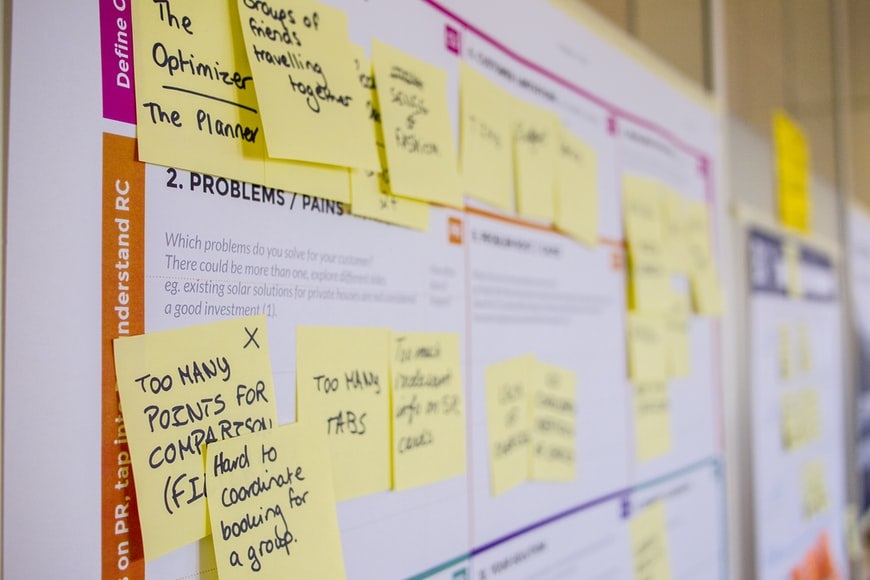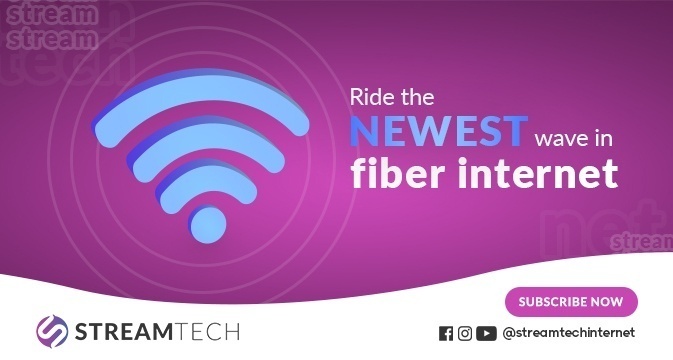Written by: Maine Dela Cruz
Consider the following scenario: you’ve developed a concept for a new product, service, or company approach. The following step is to determine “Is this feasible?” Do you have the necessary people, tools, and attitude to make this a success? Is this the correct project for you to work on at this time?
In any business venture, uncertainty is a significant issue. A business idea alone is not sufficient reason to jumpstart operation. It is crucial to understand the many facets of business operation. This involves strategies for attracting customers or clients to your products or services and encouraging them to spend so you may profit. To minimize the chance of failure, business owners should consider the important factors when developing a business plan.
To address these concerns, you should do a feasibility study. This post will assist you in getting started by giving you a guide on how to make a feasibility study. It will also highlight the importance of a fast internet connection, like having fiber internet, so you can seamlessly do your research. There are also best practices and recommendations.

You can also check out these related articles:
- What is a Feasibility Study and Why is it Important to Businesses?
- What are the technical skills needed to earn big in this digital age?
- Useful Marketing Strategies for Online Business
So, let’s answer the essential questions before you give a green light to your fantastic idea.
What is a Feasibility Study?

A feasibility study is a report that is used to determine whether or not a project is viable. This distinguishes it from a business plan, which mostly discusses plans for business growth.
Feasibility reports cover the legal requirements, economic considerations, technical resources, and scheduling issues that might affect the success or failure of a project.
These analyses are extremely beneficial for projects and businesses seeking to anticipate their return on investment. Additionally, it may be used to support a variety of sectors and objectives.
Feasibility studies have a number of advantages for business owners. These studies are critical because even if you are confident in your ability to complete a project, it does not imply it is worthwhile to undertake.
Without a feasibility study, you will have no idea about the possible risks and benefits associated with your investment.
How to Conduct a Feasibility Study

Carrying out a feasibility study is not a simple task. You must take many procedures to ensure that your conclusion is accurate. Read on to learn the crucial steps involved in conducting a feasibility study.
1. Conduct a preliminary analysis.
Begin by conducting a preliminary analysis. You should consider an unmet need, a current market where demand exceeds supply, and whether the product or service offers a clear advantage. Then you must do a preliminary analysis on whether the feasibility factors are excessively high (i.e. too expensive, unable to effectively market, etc.).
2. Make a projected income statement.
This stage necessitates working backward. Begin by estimating the anticipated revenue from the proposed project and then determining the amount of project financing required to accomplish that goal. This serves as the basis for an income statement. Consider what services are necessary and how much they will cost, as well as any modifications to revenues, such as reimbursements.
3. Conduct market research or market survey.
This stage is critical to the success of your feasibility study, therefore do a comprehensive market analysis. It is critical, and if your business lacks the means to do one properly, it may be beneficial to engage an outside agency to do it.
Market research will provide you with the most accurate estimate of the project’s income and return on investment. Several factors to examine include the geographic effect on the market, demography, competition analysis, the market’s worth and your share, and if the market is available to expand (that is, response to your offer).
4. Set up business organization and operation.
After the preceding phases have been completed, it is time to organize and operate the intended project in accordance with its technical, operational, economic, and legal viability. This is not a broad-brush exercise. It should be comprehensive and cover startup costs, capital expenditures, and operational expenses.
These expenses include those associated with equipment, merchandisers, real estate, staff, supplier availability, and overhead.
5. Prepare an opening day balance sheet.
This comprises an asset and liability valuation, which should be as precise as feasible. Create a list of goods, suppliers, expenses, and available finance to do this. Consider liabilities such as leasing or acquiring land, buildings, and equipment, as well as financing for assets and receivables.
6. Perform a thorough review and feasibility analysis of all the data.
All of these stages are critical, but the evaluation and feasibility analysis are critical to ensuring that everything is as it should be and that nothing has to be changed or tweaked. Therefore, take a minute to review your work one final time.
Compare your previous stages, such as the revenue statement, to your spending and obligations. Is it still a possibility? This is also the time to consider risk, analyze and manage it, and develop any necessary contingency plans.
7. Decide whether you want to proceed or not.
You’ve reached the stage when you must decide if the project is practical or not. That may sound straightforward, but all preceding actions have led up to this decision-making moment. Additionally, before making a binary decision, evaluate if the commitment is worthwhile in terms of time, effort, and money and whether it is aligned with the organization’s strategic goals and long-term aspirations.
Should I Hire a Professional to Conduct the Feasibility Study or DIY?

It depends.
At times, business owners may lack the essential knowledge, be entirely unaware of the subject, or just lack the necessary abilities.
Additionally, you may get biased. Apart from designers, engineers, innovators, entrepreneurs develop strong attachments to their own concepts. They rationalize away difficulties, wish away concerns, and believe in themselves despite opposing facts. This is quite normal. However, this is also why external investors, bankers, and others want an independent assessment. When the designer and owner are the same individuals, the trend is for the designer to attempt to save money by doing their own feasibility study. Frequently, the outcome is utterly worthless.
If you, the business owner, have the expertise and technical know-how in this field, you may conduct the feasibility study.
What Should a Feasibility Report Contain?

While feasibility reports can be conducted in a variety of ways, they all follow the same content structure. Here are the parts of a feasibility report:
1. Title page
This is the first thing that your reader will notice.
The title should be descriptive enough to offer your readers an idea of the study’s purpose.
Additionally, it should contain the names of the people who conducted the study.
2. Table of contents
This section can assist readers who wish to reach a certain portion without having to browse the entire document.
The table of contents must include a list of all section names and their associated page numbers.
3. Executive summary
This part provides an overview of the project, its aim, and the sources that substantiate its validity.
4. Market feasibility
This section contains information on the company’s history, present, and future. It covers the industry’s history, present trends, and anticipated future advancements.
Ensure that your emphasis is narrowed and that you describe how your idea fits within the story. In this manner, readers will get a clearer picture of what you have to offer.
5. Technical feasibility
This section addresses the elements that may make or destroy your firm, including location, product materials, and quality assurance facilities.
6. Financial feasibility
Financial feasibility is determined by your current and prior financial data, including statements, assets and liabilities, and investor information.
7. Organizational feasibility
This section details your company’s organizational structure and staffing requirements. If you have several branches and locations, indicate them here.
Feasibility Analysis Best Practices
There are a few recommended practices you can follow to ensure you get the most out of your feasibility study. For example, requesting input from experienced colleagues or supervisors might provide insight into the variables you’ve outlined and assist you in filling in any gaps. Additionally, you’ll want to double-check the facts and intelligence you’ve gathered to ensure they’re correct.
Another best practice is to adhere to a feasibility analysis template, which eliminates the need to reinvent the wheel with each project. If your business routinely undertakes projects, you may almost certainly find a feasibility study example or template to work from.
Pitfalls in Feasibility Study and How to Overcome Them

Feasibility studies may be extremely beneficial to businesses that invest the time and effort necessary to undertake them wisely. However, there are certain typical errors that NGOs make that might undermine the study’s validity. These include the following:
1. Lack of commitment to conducting a feasibility study
The initial choice – whether or not to perform a full-blown feasibility study – is frequently made hastily. This is a monumental error in and of itself. Generally, the higher the initial expenditure, the more complicated the project, or the more severe the repercussions of failure, the more critical it is to do a feasibility study. While a tiny company with limited cash requirements is one thing, any enterprise involving significant investment, numerous stakeholders, or a long-term commitment requires a feasibility study. In certain situations, failure to do one might be deemed malpractice.
When in doubt, the feasibility study is the prudent course of action. The cost of neglecting to do a feasibility study is much, far more than the cost of conducting the research and deciding not to proceed with the project.
2. Rushing through the feasibility study
Consider a feasibility study as the initial stage in the development of your campaign or project. As such, it’s normal to desire to get through it quickly. The sooner the research is completed, the sooner you may begin working on your actual project.
The issue with this method is that it undercuts some of the feasibility study’s most significant benefits.
Allow 3-4 months during your pre-campaign preparation to do your feasibility study. During this time period, you want to make the most of the chances presented by your studies.
2. Unclear definition of the proposed project
A feasibility study is only beneficial if it provides conclusive responses to particular issues. While the question “Can we develop a resort here?” is an intriguing one, it is insufficiently precise to justify investing in a feasibility study. Whereas “Can we create a 30,000 to 50,000 square foot eco-friendly resort for rich couples between the ages of 25 and 50?” is a far more achievable goal. Prior to doing the feasibility study, ensure that you have narrowed it down to a manageable degree of detail.
A concise business or project strategy is typically sufficient, but a one- or two-sentence description is insufficient.
Key Takeaway
Business moves rapidly, and it might be tempting for many firms to skip review phases in order to complete projects more quickly. However, this frequently results in misalignment, stalled initiatives, duplication of effort—or, even worse, lost time and money. Whatever sector you are in, a feasibility study may assist you in identifying risks and uncertainties and increasing your chances of company success.

Conduct Your Feasibility Study with Streamtech Internet
Now that you know the essentials of conducting a feasibility study, it’s time to begin!
A feasibility study is heavily reliant on research and communication. To do this, you need reliable and fast internet service. Streamtech Fiber Internet is the Philippines’ newest telco player that offers dedicated internet access, leased line, and Wi-Fi services to subscribers. This is applicable to its franchise areas powered by their own fiber-optic backbone link.
Streamtech offers affordable home internet plans so your small business can make use of its unlimited fiber internet connectivity. For as low as Php 1,499/month, you can enjoy fast internet speed of up to 25 Mbps. That is the fastest internet speed ever offered for residential areas.
So, what are you waiting for? Subscribe now and experience fast, secure, and uninterrupted connectivity with the best fiber internet provider in the Philippines.
To know more about their products and services, visit its official social media page (Facebook).









